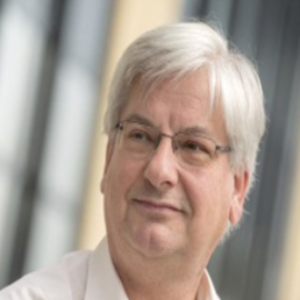Title : rocess design: Un-biased selection and use of catalysis options (chemo-, bio-, photo-) from start to finish (technology platform development to product coming from industrial plant)
Abstract:
InnoSyn B V is a chemical process R&D organization located at the Brightlands Chemelot Campus in Geleen , The Netherlands . InnoSyn performs ‘invention’, ‘improvement’ and ‘implementation’ R&D services for its customers and strategic partners (www.innosyn.com)
Organic chemistry combined with several types of catalysis and supported by modern chemical engineering constitute the technological competences of InnoSyn. Several modern catalysis technology platforms will be described, with elements ranging from technology platform creating at lab scale to development and scale-up to pilot and/or full industrial scale.
InnoSyn has a longstanding track record in (rejuvenation in) bio catalysis and chemo catalysis. Recently, photo catalysis has been added to the catalysis options.
A complex set of factors determine which catalytic solution will be best for any given synthetic challenge. For that reason, InnoSyn finds it important not to be biased in the selection of the type of catalysis.
In some of the examples applying chemo catalysis and photo catalysis, it will be shown that modern chemical engineering /process technology modifications really make the catalysis solutions work.
Bio catalysis
Three biocatalytic technology platforms will be described:
- The development and use of aldolases has already reached full industrial scale for several years (e.g. for manufacturing of statins).
- The exploration, development and use of hydroxylating enzymes and hydratases are of more recent date: recent advances with these platforms will be described. Examples of recent advances of such enzymatic oxy-functionalization are:
- Direct regioselective hydroxylation of alpha-isophorone and diclofenac
- Synthesis of 10-hydroxystearic acid by enantio- and regioselective water addition to oleic acid.
Chemo catalysis
- A definition of Process Intensification is “Any chemical engineering development that leads to a substantially smaller, cleaner, safer, and more energy-efficient technology”.
- When aiming for less hazardous processes that generate less waste, consume less energy, and require less steps and thereby less equipment, catalysis plays an equally significant role to meet these objectives.
- At InnoSyn, both (chemo-) catalysis and flow reactors are used to these ends.
- Examples of chemo- catalysis platform technologies developed recently :
- Meeting unmet needs in hydrogenation: replacing stoichiometric metal hydride reductions by highly efficient catalytic hydrogenations and asymmetric hydrogenations of notoriously difficult substrate classes;
- Replacing classical biaryl synthesis methods based on pre-functionalized arene coupling partners by single-step, aerobic cross-dehydrogenative arene coupling based on highly active homogeneous Pd catalysts;
- Using 3D printed zig-zag flow reactors for safe oxidations with pure oxygen under high pressure single-phase conditions, exemplified by catalytic aerobic oxidation as a low-cost, low-waste tool for EpoxoneTM production that replaces prior art based on expensive, waste-generating stoichiometric terminal oxidants.
Photo catalysis
- Modern LED technology has clear advantages over classical Hg-lamps, and has contributed in reviving photochemistry. This -- combined with falling film reactor set-ups to enable much better irradiation of substrate – constitutes a powerful technology platform in expanding and scaling-up photo chemistry towards industrial manufacturing for fine and specialty chemicals. The combination of features is available from lab up to pilot plant scale, and examples will be discussed.



